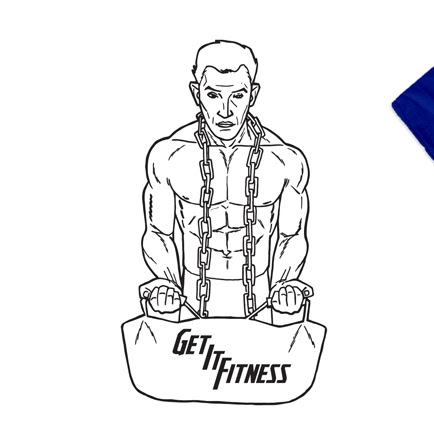Scott J Garman
age ~63
from San Pedro, CA
- Also known as:
-
- Scott J Garmen
- Phone and address:
- 1032 S Weymouth Ave, San Pedro, CA 90732
Scott Garman Phones & Addresses
- 1032 S Weymouth Ave, San Pedro, CA 90732
- 15370 U S S Antietam, San Pedro, CA 90732 • 3102415551
- Ventura, CA
- West Linn, OR
- Honey Grove, PA
- Hamilton, MA
- Los Angeles, CA
- Beverly, MA
Work
-
Position:Professional/Technical
Education
-
Degree:High school graduate or higher
Resumes

Scott Garman
view source
Scott Garman
view source
Scott Garman
view source
Scott Garman
view source
Scott Garman
view source
Scott Garman
view sourceLocation:
United States

Scott Garman
view sourceLocation:
United States
License Records
Scott Garman
License #:
21423 - Expired
Category:
Nursing Support
Issued Date:
Nov 20, 1992
Effective Date:
May 28, 1998
Type:
Nurse Aide
Us Patents
-
Native Overlay For Rapid Editing Of Web Content
view source -
US Patent:20210026526, Jan 28, 2021
-
Filed:May 13, 2020
-
Appl. No.:15/931026
-
Inventors:- San Francisco CA, US
Timothy J. Snyder - San Francisco CA, US
Scott A. Garman - San Francisco CA, US
Joseph M. Fox - San Francisco CA, US -
International Classification:G06F 3/0488
G06F 3/0486
G06F 16/958
G06F 16/957
G06F 9/451
G06F 40/14
G06F 3/0484 -
Abstract:A user interface can display a rendering associated with an interactive layer corresponding to one or more rendered elements of the rendering. Based at least partly on receiving an indication of an interaction with the user interface, a new rendered element can be displayed on the user interface. Based at least in part on information associated with the one or more rendered elements, a position in the interactive layer closest to a position of the new rendered element on the user interface can be determined and a rendered marking can be displayed at or near the position in the interactive layer that is closest to the position of the new rendered element. Based at least in part on a determination that the new rendered element is to be positioned at or near the position in the interactive layer, the rendering can be updated.
-
Native Overlay For Rapid Editing Of Web Content
view source -
US Patent:20190155496, May 23, 2019
-
Filed:Jan 24, 2019
-
Appl. No.:16/256884
-
Inventors:- San Francisco CA, US
Timothy J. Snyder - San Francisco CA, US
Scott A. Garman - San Francisco CA, US
Joseph M. Fox - San Francisco CA, US -
International Classification:G06F 3/0488
G06F 16/957
G06F 16/958
G06F 9/451
G06F 3/0484
G06F 17/22
G06F 3/0486 -
Abstract:A web rendering module in the operating system is used to render and display a web page. The web rendering module also generates layout data that describes the position and size of each visual element on the rendered web page. A web editing application uses the layout data to generate a native overlay. The native overlay is an arrangement of cells, and each cell has the same position and size as a respective visual element. The application displays the native overlay on top of the rendered web page so that each visual element on the web page is aligned with a cell in the native overlay. The cells in the native overlay are transparent so that the rendered web page remains visible to the user, but the native overlay captures any interactions that the user performs. The interactions are then processed to make a corresponding change to the web page.
-
Native Overlay For Rapid Editing Of Web Content
view source -
US Patent:20190155497, May 23, 2019
-
Filed:Jan 24, 2019
-
Appl. No.:16/256886
-
Inventors:- San Francisco CA, US
Timothy J. Snyder - San Francisco CA, US
Scott A. Garman - San Francisco CA, US
Joseph M. Fox - San Francisco CA, US -
International Classification:G06F 3/0488
G06F 16/957
G06F 16/958
G06F 9/451
G06F 3/0484
G06F 17/22
G06F 3/0486 -
Abstract:A web rendering module in the operating system is used to render and display a web page. The web rendering module also generates layout data that describes the position and size of each visual element on the rendered web page. A web editing application uses the layout data to generate a native overlay. The native overlay is an arrangement of cells, and each cell has the same position and size as a respective visual element. The application displays the native overlay on top of the rendered web page so that each visual element on the web page is aligned with a cell in the native overlay. The cells in the native overlay are transparent so that the rendered web page remains visible to the user, but the native overlay captures any interactions that the user performs. The interactions are then processed to make a corresponding change to the web page.
-
Native Overlay For Rapid Editing Of Web Content
view source -
US Patent:20190073120, Mar 7, 2019
-
Filed:Oct 19, 2018
-
Appl. No.:16/165751
-
Inventors:- San Francisco CA, US
Timothy J. Snyder - San Francisco CA, US
Scott A. Garman - San Francisco CA, US
Joseph Matthew Fox - San Francisco CA, US -
International Classification:G06F 3/0488
G06F 17/30
G06F 9/451
G06F 3/0486
G06F 3/0484
G06F 17/22 -
Abstract:A web rendering module in the operating system is used to render and display a web page. The web rendering module also generates layout data that describes the position and size of each visual element on the rendered web page. A web editing application uses the layout data to generate a native overlay. The native overlay is an arrangement of cells, and each cell has the same position and size as a respective visual element. The application displays the native overlay on top of the rendered web page so that each visual element on the web page is aligned with a cell in the native overlay. The cells in the native overlay are transparent so that the rendered web page remains visible to the user, but the native overlay captures any interactions that the user performs. The interactions are then processed to make a corresponding change to the web page.
-
Native Overlay For Rapid Editing Of Web Content
view source -
US Patent:20170212672, Jul 27, 2017
-
Filed:Mar 21, 2017
-
Appl. No.:15/465462
-
Inventors:- San Francisco CA, US
Timothy J. Snyder - San Francisco CA, US
Scott A. Garman - San Francisco CA, US
Joseph Matthew Fox - San Francisco CA, US -
International Classification:G06F 3/0488
G06F 9/44
G06F 17/22
G06F 17/30
G06F 3/0486
G06F 3/0484 -
Abstract:A web rendering module in the operating system is used to render and display a web page. The web rendering module also generates layout data that describes the position and size of each visual element on the rendered web page. A web editing application uses the layout data to generate a native overlay. The native overlay is an arrangement of cells, and each cell has the same position and size as a respective visual element. The application displays the native overlay on top of the rendered web page so that each visual element on the web page is aligned with a cell in the native overlay. The cells in the native overlay are transparent so that the rendered web page remains visible to the user, but the native overlay captures any interactions that the user performs. The interactions are then processed to make a corresponding change to the web page.
-
Native Overlay For Rapid Editing Of Web Content
view source -
US Patent:20160041954, Feb 11, 2016
-
Filed:Aug 5, 2014
-
Appl. No.:14/452390
-
Inventors:- San Francisco CA, US
Timothy J. Snyder - San Francisco CA, US
Scott A. Garman - San Francisco CA, US
Joseph Matthew Fox - San Francisco CA, US -
International Classification:G06F 17/22
G06F 3/0488
G06F 3/0486 -
Abstract:A web rendering module in the operating system is used to render and display a web page. The web rendering module also generates layout data that describes the position and size of each visual element on the rendered web page. A web editing application uses the layout data to generate a native overlay. The native overlay is an arrangement of cells, and each cell has the same position and size as a respective visual element. The application displays the native overlay on top of the rendered web page so that each visual element on the web page is aligned with a cell in the native overlay. The cells in the native overlay are transparent so that the rendered web page remains visible to the user, but the native overlay captures any interactions that the user performs. The interactions are then processed to make a corresponding change to the web page.
Amazon

signed copy The Dragon's Lady
view sourceAuthor
Scott Garman & Elizabeth Joy
Binding
Paperback
Pages
360
Publisher
Traffor Publishing
ISBN #
2
Name / Title
Company / Classification
Phones & Addresses
Assistant Recreation Director
Town of Manchester
Police Protection · Executive Office · Town Government · Air/Water/Waste Management · Individual/Family Services · Engineering Services · Public Finance/Taxation/Monetary Policy · Land/Mineral/Wildlife Conservation
Police Protection · Executive Office · Town Government · Air/Water/Waste Management · Individual/Family Services · Engineering Services · Public Finance/Taxation/Monetary Policy · Land/Mineral/Wildlife Conservation
8606455561, 8606473121, 8606473201, 8606473096
Myspace
Googleplus

Scott Garman
Lived:
Portland, OR
About:
Embedded Linux Developer - I work for Intel on the Yocto Project, and recently began acting as a technical evangelist for the MinnowBoard - minnowboard.org

Scott Garman

Scott Garman

Scott Garman

Scott Garman

Scott Garman

Scott Garman

Scott Garman
Classmates

Scott Garman
view sourceSchools:
Eastside Junior-Senior High School Butler IN 2002-2006
Community:
Richard Mullett

Scott Garman
view sourceSchools:
Bronson Junior Senior High School Bronson MI 1974-1978
Community:
Elizabeth Beth

Scott Garman
view sourceSchools:
Goshen High School Goshen IN 1987-1991

Scott Garman
view sourceSchools:
Spring Grove High School Spring Grove PA 1995-1999
Community:
Karen Housel, Brad Grissinger, Erik Starcher

Scott Garman
view sourceSchools:
Pike Valley High School Scandia KS 1980-1983
Community:
Barry Isaacson, Michelle West, Melanie Lindberg, Marcy Isaacson, Cindy Odell, Chris Olsen, Becky Sothers, Melissa Brummer, Danell Sothers, Kristy Guy, Dale Mlynarik

Scott P Garman
view sourceSchools:
Central Cass High School Casselton ND 1983-1987
Community:
Patrick Morris, Larry Pederson, Elvin Loebrick

Scott Garman
view sourceSchools:
Pike Valley High School Scandia KS 1979-1983
Community:
Barry Isaacson, Michelle West, Melanie Lindberg, Marcy Isaacson, Cindy Odell, Chris Olsen, Becky Sothers, Melissa Brummer, Danell Sothers, Kristy Guy

Pike Valley High School, ...
view sourceGraduates:
Scott Garman (1979-1983),
Craig Stensaas (2001-2005),
Jane Doe (1990-1994),
Rick Sjolander (1978-1981)
Craig Stensaas (2001-2005),
Jane Doe (1990-1994),
Rick Sjolander (1978-1981)

Scott Garman
view source
Scott Garman
view source
Scott Garman
view source
Scott Garman
view source
Scott Garman
view source
Scott Garman
view source
Scott R Garman
view source
Scott Garman
view sourceFlickr
Youtube
News

Y Combinator Breaks Through the Grass Ceiling
view source- 32-year-old graduate of Penn State (motto: "Making Life Better") and Oaksterdam University ("an internationally recognized Cannabis College") says that Meadow, which he cofounded with Rick Harrison, Harrison Lee, and Scott Garman, makes ordering cannabis, "Just like ordering an Uber," the wildly pop
- Date: Feb 04, 2015
- Category: Business
- Source: Google

White supremacist leader visits ND town
view source- "No hate in our state" and "You are not welcome here" stood across the gravel road from Cobb's home and shouted at him and the handful of his supporters. Scott Garman, a leader of the protest group, told Cobb that the group planned to monitor him and that the protest was "not a one-day thing."
- Date: Sep 22, 2013
- Category: U.S.
- Source: Google
Get Report for Scott J Garman from San Pedro, CA, age ~63













